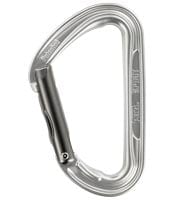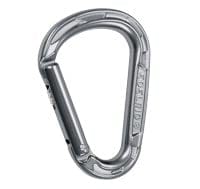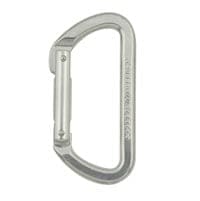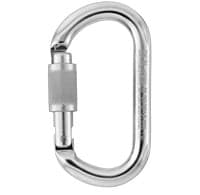Author: Site Editor Publish Time: 2022-04-15 Origin: Site











Asymmetric D Shape

By far the most popular design out there, asymmetric D carabiners (sometimes called offset D or modified D carabiners) work like regular D's, but they're slightly smaller at one end to further reduce weight. Asymmetric carabiners generally have larger gate openings than regular Ds, which makes clipping them even easier. But they don't have as much inside room as similarly sized Ds or ovals. Asymmetrical carabiners make up the vast majority of the carabiners that most climbers own.
Pros:
Large gate opening
Strong and light
Cons:
More expensive than other shapes
Not as strong as the D shape

Similar to the asymmetric D shape, pear-shaped carabiners have large gate openings to allow easy clipping of ropes, knots and gear. Pear-shaped carabiners are used primarily for belaying and rappelling, but also can be used at anchor points for top roping or multipitch climbing.
You’ll sometimes hear these called HMS carabiners, and some are even marked with HMS on the spine. HMS indicates that the carabiner is designed with a wide, more symmetrical top that works well with a Münter hitch.
Pros:
Large gate opening
Designed specifically for belaying and rappelling
Cons:
Heavier and more expensive than most other shapes
Not as strong as D and asymmetric D shapes
 D-shaped carabiners are excellent for most kinds of climbing. They hold loads off-center toward the stronger, non-gated side, so a smaller, lighter D carabiner can be just as strong as a larger oval.
D-shaped carabiners are excellent for most kinds of climbing. They hold loads off-center toward the stronger, non-gated side, so a smaller, lighter D carabiner can be just as strong as a larger oval.
Pros:
Strongest shape
Larger gate opening than oval shape
Cons:
Smaller gate opening and heavier than asymmetric D shape
More expensive than oval shape
 Oval carabiners are the original style. They're versatile and affordable, though not quite as strong as other shapes. Oval carabiners have smooth, uniform top and bottom curves to limit load shifting. They offer more gear-holding capacity than D-shape carabiners and their symmetry permits them to be used for carabiner-brake rappels.
Oval carabiners are the original style. They're versatile and affordable, though not quite as strong as other shapes. Oval carabiners have smooth, uniform top and bottom curves to limit load shifting. They offer more gear-holding capacity than D-shape carabiners and their symmetry permits them to be used for carabiner-brake rappels.
They're ideal for aid climbing because they center loads at their curve; runners won't shift under load.
Pros:
Uniform shape limits load shifting
Hold more gear than D-shape carabiners
Cons:
Smaller gate opening and heavier than other shapes
Not as strong as other shapes
